- Equipment
- Inks & Supplies
- Services
- Applications
- Tagless
- Resources
- About Us
- Contact Us
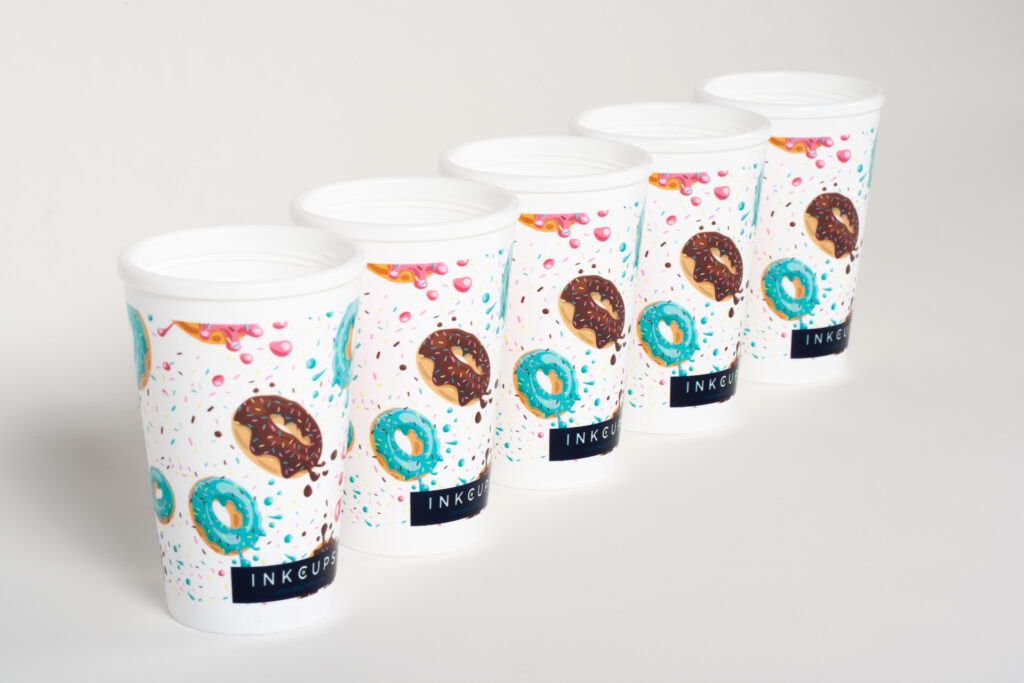
Direct-to-object printing involves taking a 2D image and printing it onto a 3D item. Enabled by UV inkjet digital printing, it has proved a hugely disruptive technology in the promotional and industrial printing markets since its advent in the late 2010s and its growth shows no signs of slowing down.
Technology is keeping pace with demand, with innovation from pioneers in the sector constantly expanding what is possible. As a result, the quality, precision and speed that can now be achieved when printing directly on to complex shapes and challenging substrates is very impressive.
Looking beyond capabilities and market demand, at a production level there is also a shift towards direct-to-object printing taking place as businesses look for ways to reduce waste through inventory reduction, during production and through initiatives such as eliminating shrink sleeves.
For those considering investing in direct-to-object printing technology, these ten questions will give you an overview of what to think about:
1. What objects can be printed on with direct-to-object printing?
With direct-to-object printing, print has moved far beyond paper. If you can picture it, you can probably print it too. Drinkware, glass bottles, stainless steel tumblers, pens, candle holders, sporting goods, reusable bags, beverage cans, automotive parts, tools, ceramic tiles, furniture, stationery, tech accessories and even candy — with the right technology, inks and pretreatment, direct-to-object printing makes it possible to print directly onto almost anything you can imagine. For some that imagination may end with relatively flat items decorated using flatbed printers, but Inkcups’ pioneering cylindrical UV inkjet printing technologies mean that it doesn’t have to – vibrant, multicolor, edge-to-edge graphics that wrap right around straight-sided and tapered cylindrical objects are not only possible, but cost effective to produce in runs as small as one or as large as ten thousand.
2. What technologies make direct-to-object printing possible?
Digital inkjet printing has been driving transformation in the print industry since it first became possible in the late 1970s and it is this technology, along with UV curing, that makes direct-to-object printing possible. Tiny droplets of UV-curable ink are jetted onto a 3D item using a print head before an intense ultraviolet (UV) light activates a chemical reaction that instantly ‘cures’ the ink. This instantaneous drying process ensures that each ink droplet stays exactly where it should, with no ‘bleeding’ (or spreading). This allows for precise reproduction of vividly colored digital images, as well as fine lines, text and numbering.
Most direct-to-object printing is done using flatbed UV inkjet printing machines. Small format flatbed printers such as the XJET800 are ideal for objects such as coasters, fishing lures and candy tins, taller large format machines such as the X5-T flatbed UV digital printer can handle items such as coolers and footballs. There are also specialist flatbed machines such as the XJET Switch flatbed UV digital printer that was developed specifically for printing onto bags and totes made from canvas, PVC, polyester, non-woven materials and more.
In addition, Inkcups’ range of cylindrical UV inkjet printers use specially designed fixtures to hold each item to be decorated, making it possible to produce full-wrap, full-color images on most straight-walled and tapered cylindrical items such as drinkware, thermoses, sports bottles, candle holders, glass bottles, beverage cans, cosmetics bottles and even make-up containers.
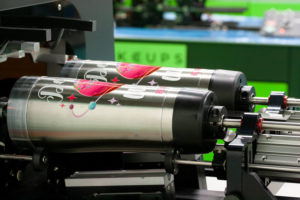
3. What print quality and resolution can be achieved with direct-to-object printing?
One of the major advantages of direct-to-object digital printing is the outstanding image quality it enables. Inkcups’ flatbed UV digital printing machines, for example, are capable of achieving resolutions up to 1200 dpi , while our cylindrical UV printing machines can deliver resolutions ranging from 900 dpi up to 1200 dpi. Combined with specially designed tooling to hold items in place during printing, placement of each ink droplet is extremely precise, enabling accurate reproduction of even the most intricate designs.
4. How is color accuracy and consistency maintained across different print jobs?
Digital print is synonymous with a wide color gamut and outstanding image reproduction, and direct-to-object digital printing is no different. Direct-to–object inkjet UV printers typically print with CMYK, white and varnish. With Inkcups’ Helix® range of cylindrical printers, it is possible to add light cyan and light magenta to make it possible to render photorealistic images.
Moving beyond inks and printing machines themselves, to achieve consistently high-quality images with tight registration and accurate, replicable color, artwork needs to be prepared properly. In direct-to-object printing, this typically means that artwork needs to be prepared with specific layers – an optional one for primer, one for a white base layer, another for color and finally one for varnish – so that when the image is ‘ripped’ (or rasterized) these layers tell the printer where and how each print head should jet each droplet of primer, ink or varnish.
5. How fast can a direct-to-object printer produce prints?
One of the biggest advantages of direct-to-object digital printing is that, beyond artwork preparation, which can be relatively easily automated, there is almost no setup time entailed in the process. As a result, runs of one can be as cost effective as runs of thousands, making on-demand production a real possibility, as well as opening up opportunities in personalization and mass customization.
The X5-T flatbed UV digital printer can print a full-color design with an area of up to 20 inches by 24 inches in as little as 90 seconds, while the Helix ONE® compact cylindrical printer can print a water bottle or reusable cup in as little as 46 seconds after the item is secured in the machine. With its 12 stations and automatic loading/unloading capability, the Revolution® high speed cylindrical printer can decorate up to 600 bottles, cans or cups per hour at a resolution of 702 x 900 dpi.
6. What types of inks are used?
Direct-to–object inkjet UV printers typically print with CMYK, white and varnish, and generally UV inkjet inks are available as hard, flexible or edible inks. However, because direct-to-object printing is so versatile, there is no such thing as a universal ink. There are numerous different kinds of inks because many have been formulated for printing on particular materials. And while some inks will be suitable for a wide range of applications, some end products will require inks with greater flexibility or scuff resistance than others.
Consider the decoration of a PVC stadium bag or a plastic sports bottle, for example. Whatever ink is used will need to withstand bending, twisting and stretching without cracking or image distortion, which makes it important to use an ink such as XFlexx that retains a high degree of stretchability after curing.
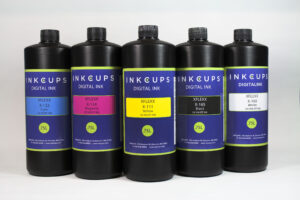
Furthermore, while all Inkcups UV inkjet inks are Prop 65 compliant, the environmental and safety regulations that govern what kinds of inks are used will vary from application to application, as well as by region. Some applications, for example, may require careful consideration of whether food-contact is possible before making a decision about ink. Overall, however, because no solvents are needed within the process and because UV-curing is a relatively energy efficient process, direct-to-object UV inkjet printing can often be more environmentally friendly than other decoration methods.
7. What are the challenges in terms of material types and surface textures for direct-to-object printing?
One of the major advantages of direct-to-object UV inkjet printing is that it makes it possible to print on almost any type of substrate, although in some cases, pretreatment may be needed and specialized inks can be used to further improve adhesion.
Absorbent materials can present a challenge, such as in the case of non-wovens, canvas and jute (burlap), all of which are increasingly popular for reusable bags. Their absorbent properties can make it difficult for some digital printing technologies to achieve the same level of white opacity and color brightness as screen printing, but with the right inks and technique this can be overcome.
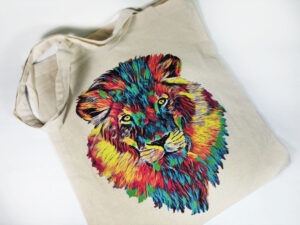
Glass can also present challenges, partly because the limited resin in digital inks makes adhesion to glass challenging and partly because glassware is often coated to protect it in transit. However, by tailoring the pretreatment method to the intended application, glass can be rendered eminently printable.
8. What pre-treatment processes are required for optimal print quality and durability?
Pre-treatment is a key process in direct-to-object UV inkjet printing. This is partly because the technology lends itself so well to such a variety of substrates, but also because many of the applications for which it is most popular are products that need to be durable and retain their vibrancy over long periods of use. Getting pre-treatment right demands an understanding of the end application and enough knowledge of the substrate to pair the right technique with the right ink and technology, so it’s advisable to work with an equipment manufacturer with expertise in pre-treatment across varied applications, inks, substrates and printing methods.
Consider printing onto glass, for example. A glass candle holder may only require basic pre-treatment such as flame pre-treatment and primer, while a photo-printed Father’s Day beer glass will need a far more robust pre-treatment technique to ensure it can stand up to numerous uses and washes.
A non-woven bag, on the other hand, may not require pre-treatment per se, but an initial layer of white can be used to fill in the ‘holes’ in the absorbent substrate to provide a flatter surface for a second layer of white before the graphic itself is printed.
9. Are there any special software or training requirements for operating a direct-to-object printer?
In contrast to other object decoration methods, direct-to-object printing requires almost no setup, which makes the technology more accessible to operators from a broader range of backgrounds. Typically, there are two types of training you may need after investing in a direct-to-object inkjet printer; software and maintenance. Both of these should be delivered as your technology partner’s technicians are installing and setting up your machine.
Software training is likely to include artwork preparation, something made much simpler and more efficient by Inkcups’ ArtPrep software, as well as getting familiar with the printer control system and raster image processing. Maintenance training should ideally cover scheduled maintenance and be complemented by a standard operating procedures (SOP) document.
10. What is the market demand like for direct-to-object printing services?
Direct-to-object printing has been popular in both the promotional and industrial industries since its advent, with drinkware, party/wedding favors, promotional items and industrial products all among the most commonly decorated products. Drinkware and reusable bags are already extremely popular applications, but direct-to-object printing’s suitability for on-demand production and personalization means that it has a broad appeal that is beginning to reach into numerous other markets.
In packaging, for example, direct-to-can and direct-to-bottle printing enable craft breweries to take control of their packaging production and take advantage of digital printing’s short-run benefits for seasonal products, general SKU proliferation and even mass customization. The look and feel of a graphic that has been digitally printed onto a product can also convey the impression of a higher-end product than an adhesive or shrink label, increasing direct-to-object printing’s appeal for independent distilleries, boutique wineries and small beverage producers.
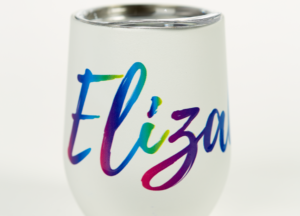
Another market segment generating a great deal of demand for direct-to-object printing is consumer print-on-demand. As photo printing and personalization become increasingly ubiquitous, consumers seek ever-more creative ways to individualize their homes and the objects that they use every day, creating untold opportunities for print businesses with direct-to-object capabilities.
Get started in direct-to-object printing with Inkcups
Inkcups is proud to have been at the forefront of developments in direct-to-object inkjet printing since 2010, continually pioneering new techniques, technologies and inks to advance the market and meet the changing needs of our customers and the end-users in the market. Whether you’re looking to take your first steps into drinkware printing as a complement to your other services, considering bringing packaging or personalization in-house or planning a wider investment to ensure that your direct-to-object capabilities are up-to-date, we’ve got you covered.
To learn more about Inkcups range of direct-to-object UV inkjet cylindrical and flatbed printers, get in contact with your local sales representative.
Learn more, visit: All About Direct to Object Cylinder Printers
Rather watch? Tune in to Ben Adner, Founder of Inkcups discussing DTO printing in depth: Direct-to-Object Printing: How Will it Impact Label Printing.
Back to Blog Home
Add Your Comment